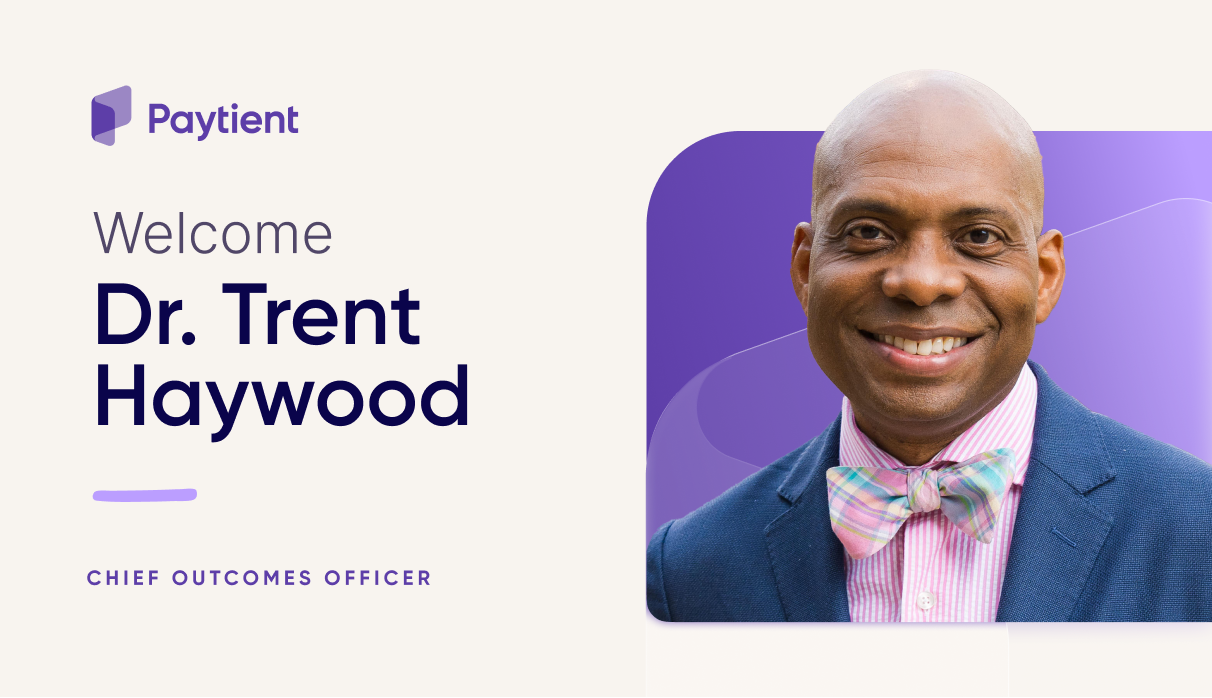The Paytient team is in Las Vegas this week for HLTH 2022. This year's four-day event features key industry stakeholders across the health ecosystem talking about everything from advancing health equity and the power of partnerships to digital disruption and value-based care.
HLTH is a fantastic opportunity to build connections and develop relationships with like-minded folks at the premier health innovation event. Our team appreciates any opportunity to work together with the leading minds in healthcare to push boundaries and help people access and afford care.
The conference is packed with disruptors and trailblazers working to reshape the spectrum of health, offering attendees a wealth of useful information. In this blog post, we’re sharing some of our key takeaways from HLTH 2022. Here are a few highlights of what we’ve seen and heard at the conference.
The Transformative Power of Data
Leveraging data was the focal point of a great session featuring Centene CEO Sarah London and Salesforce Chief Health Officer Fatima Paruk. London and Purak discussed how Centene is working to address major concerns like health equity and access to care — particularly how Centene is using technology and data to transform healthcare.
London shared that data is a critical part of any organizational transformation, with the healthcare ecosystem particularly relying on data to help drive better results for everyone from patients to payers.
“Data is the lowest-cost way of having a huge impact,” she said.
The discussion also touched on who can be a caregiver and what is “care,” with London saying she feels both of those terms could be redefined in the coming years as healthcare continues to evolve.
Designing Benefits to Meet Diverse Needs
While diversity is an integral part of our social fabric, workplaces don’t always account for it when designing their benefits. Representatives with Accenture, H&R Block, and CarMax came together to discuss how employers can ensure their people programs help all employees find success and advancement at work.
When it comes to redesigning benefits for a more diverse employee base, Accenture learned by listening to its team members.
Julie Wilkes, the company’s well-being, resiliency, and disability senior manager, said employees are largely looking to their employers to take care of the things that matter to them.
“Our goal is to be a company that is loved by our people, our clients, and in the world,” Wilkes said. “How do we allow them to fall in love not just with our work, but with how we’re treated?”
Lindsey Lanzisero, H&R Block’s VP of total reward and HR systems, pointed toward Belonging@Block as one of many initiatives the company has embraced to elevate its talent and culture. She also said the company has spent more time perfecting how it communicates its benefits offering to employees.
“Way too often we write communications as benefits professionals, and it doesn’t make any sense to the layperson,” Lanzisero said. “We’ve taken a huge effort to completely rewrite our benefits microsite. Simple language helps people understand their benefits.”
Meredith Touchstone, director of benefits with CarMax, said the company has recently focused on mental health as well as medical affordability.
“We all know people aren’t getting care,” she said. “Let’s make it easier for people to get care.”
Efforts to Reduce the Cost of Care
Healthcare is incredibly expensive in the U.S., but some companies are working to create solutions to this ballooning situation. Leaders from Ro, Galileo, and Aledade joined a panel to discuss how we can think differently to solve these cost issues.
Zachariah Reitano, CEO and co-founder of Ro, said the company sees a future that centers on goal-oriented care. Ro helps drive down costs by removing middlemen like insurance providers and PBMs, instead having patients pay out-of-pocket costs directly to providers.
“We’re able to drive a higher-quality experience at lower cost by removing stakeholders and using technology to deliver this,” Reitano said.
Steering Employees Toward High-Value Care
With about half of all Americans receiving health insurance through their employers, it can cause confusion about who is responsible for ensuring high-value care (i.e., low in cost but high in quality). Leaders with Scripps Health, Boeing, Qualcomm, and One Medical sat down to discuss the role various stakeholders play in ensuring high-value care for people.
Melissa Real, director of Americas benefits with Qualcomm, said the company has partnered with Scripps Health to invest resources into maternity care, cancer, and mental health.
Those efforts include a bold approach to mental health that aims to “do something good for the world,” said Scripps Health Chief Medical Officer Anil Keswani.
“They put an hour on everyone’s time, and we brought mental health professionals on including Deepak Chopra,” Keswani said. “We reached a huge part of the Qualcomm employee population.”
Jeff White, senior director of global health and HR M&A for Boeing, stressed the importance of workers having an ongoing relationship with their primary care doctor. Boeing partners with One Medical for its on-site and near-site primary care needs.
Our employees don’t trust me — they trust their doctor,” White said. “That’s why we’re leaning into more value-based care because they will have that solutioning.”
Let’s Make Healthcare More Affordable
While HLTH 2022 touched on countless topics, the high cost of healthcare and potential ways to give people the power to pay for care were consistent themes.
A benefit like Paytient truly empowers people to get the care they need without worrying about whether they can afford it. We never charge any interest or fees, which means our members can use their Health Payment Accounts to cover care costs and not face any of the normal negative consequences of credit.
Interested in learning more about how HPAs can help your team access and afford care? Download our Paytient Quick Start Guide.





